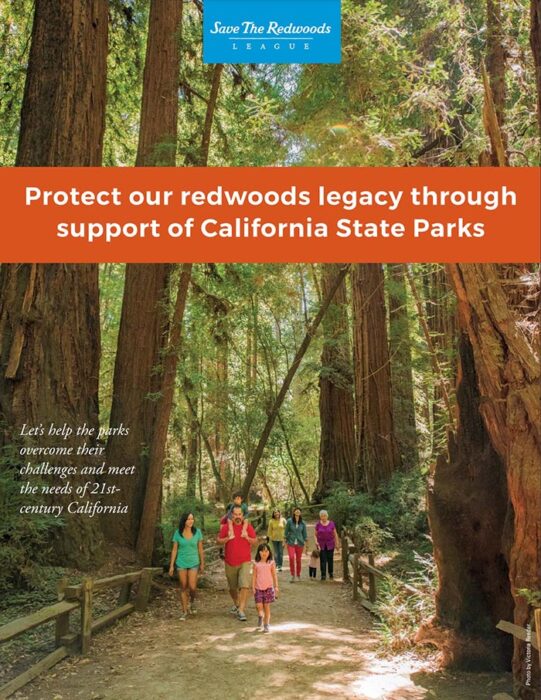Support California State Parks
An unrivaled parks system that enriches our lives
When the California State Parks System we know today was launched in the 1920s, it was transformational in its ambition and its innovation. Built on a backbone of old-growth redwood parks, the system rapidly grew to become the envy of the world—the largest state park system in the country, and a visionary leader in protecting nature, history, and recreational resources for the people of California and beyond. That legacy of leadership is at stake.
Despite ever-growing demand from millions of visitors, the increasing urgency of protecting nature in a time of climate change, and the dramatic impacts of storm and fire damage, there has not been a functioning land acquisition effort for state parks in nearly 15 years, and funding hasn’t kept up with the backlog of deferred maintenance.
Today, we urge legislators to support funding for the state’s unrivaled parks, which protect treasured lands and waters at the front lines in the fight against climate change, and contribute to a healthier, richer quality of life for us all.
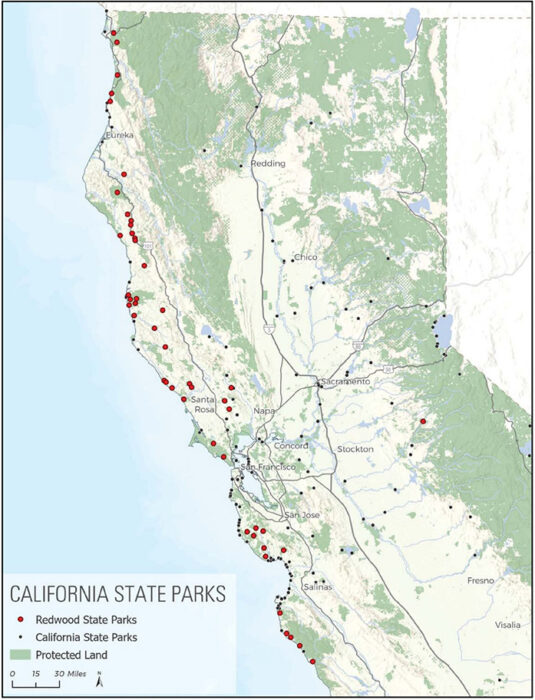
California’s treasured state parks need lawmakers’ support
We urge legislators to restore climate resilience funds to the state budget.
From the redwood forests of the north coast to the peaks of the Sierra Nevada to the deserts of Southern California to our epic Pacific coastline, California’s 280 state parks preserve and protect the best of our natural values and cultural history.
- More than 68 million visitors from around the globe enjoy the California State Parks System every year, generating more than $100 million in annual revenue and pumping many times that amount into local tourism economies.
- With 340 miles of coastline, 5,200 miles of trails, 15,000 campsites, and more than 140,000 acres of coast redwood forests (40% of the world’s protected coast redwood forests), the system contains the largest and most diverse recreational, natural, and cultural heritage holdings of any state agency.
But unfortunately, our shared parks system is straining to meet its promise. It faces more than $1 billion in deferred maintenance, compounded by significant costs resulting from recent fire and storm damage, and has added only one new property to its system in the last 14 years. The system is not large enough or resourced to meet the needs of California’s growing, diverse population.
Redwoods and the parks
Redwoods are foundational to the parks movement in California. The giant sequoias of Mariposa Grove and the coast redwoods of Big Basin inspired the very first parks, and in 2022 more than 14 million people visited California’s 49 redwood state parks. These places are among the park system’s gems: from Redwood National and State Parks (a UNESCO World Heritage Site) to Pfeiffer Big Sur State Park to Calaveras Big Trees State Park. It’s no wonder redwoods are our official state trees.
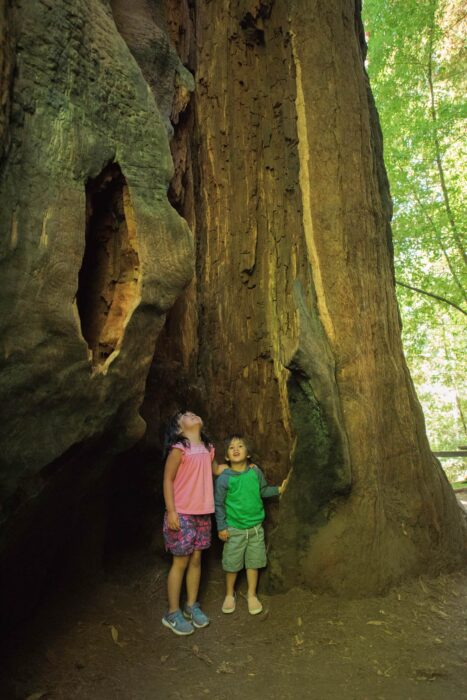
Redwoods also can play an exceptionally large role in addressing climate change. Old-growth coast redwood forests store more carbon aboveground per acre than any other forest type, followed by giant sequoia forests. And young redwood forests growing back from past clear-cuts—if effectively managed—can rapidly regain that stature. We’re lucky to still have these trees. Following the discovery of gold in 1849, 95% of California’s old-growth coast redwoods were logged. And the last of the giant sequoias persist on an area about half the size of Bakersfield.
Save the Redwoods League was there at the beginning working with the state to protect redwoods in public parks, and it helped establish the park system in 1927. The League has since transferred land to nearly 40 parks and helped restore natural areas and improve recreational infrastructure in many of them. Redwoods are part of our identity as Californians, and their future is inextricably linked to California’s state parks. The health of California State Parks is essential to the health of the redwoods.
Recreation and beyond
We turn to our shared state parks for inspiration, well-being, and recreation—and increasingly, we’re counting on them to improve the lives of future generations. Park visitation has long been growing with our diverse population. A growing body of research identifies the health value of time spent in nature. The state park system is uniquely positioned to help Californians realize this benefit.
The success of California State Parks is also vital to several high-priority state initiatives. Gov. Gavin Newsom recently announced a new Outdoors for All initiative that promises access to California’s prized landscapes for everyone, regardless of background or location. The state’s bold plan for climate leadership through the 30×30 initiative and the California Climate Adaptation Strategy call for accelerating land conservation and for investing in nature-based solutions to climate change. California’s state parks serve as the ideal foundation for that climate leadership, offering climate-resilient landscapes, carbon sinks, equitable park access, and stewardship laboratories for a restoration economy.
Now more than ever, California State Parks needs critical funding to keep pace with 21st-century California
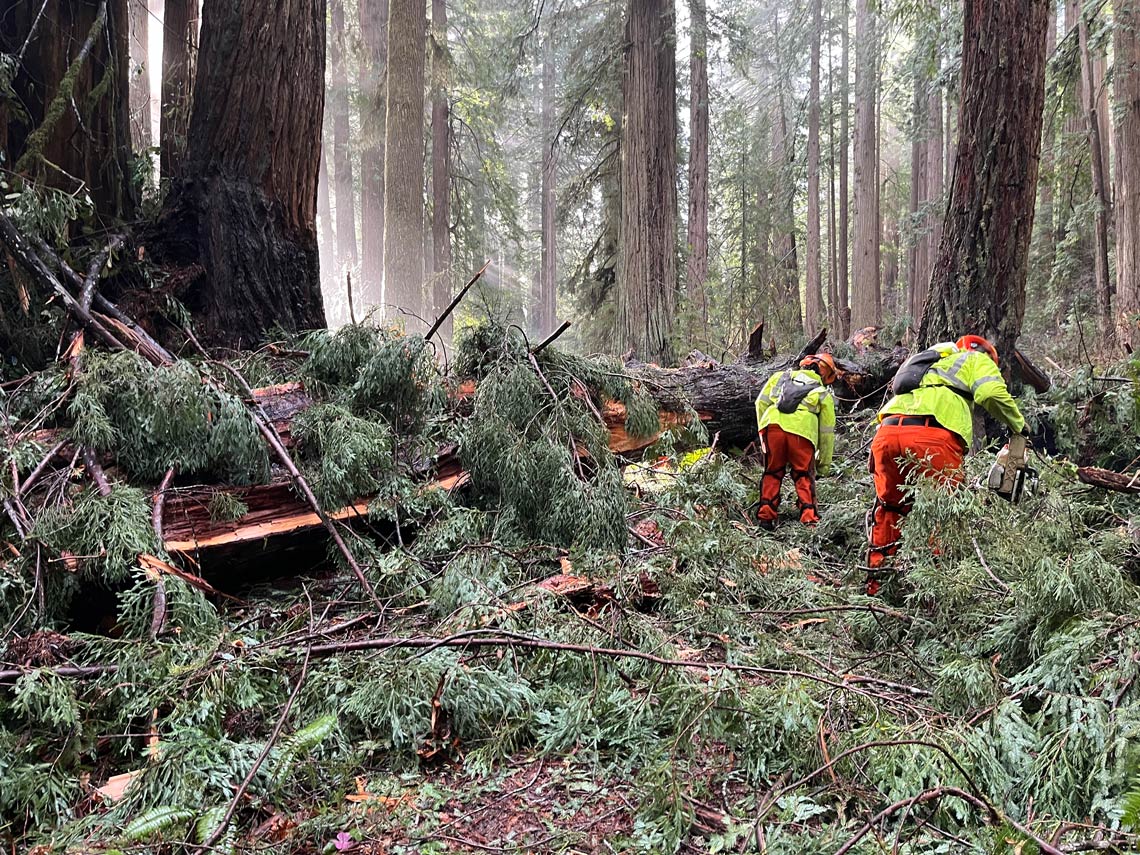
Funding not keeping pace
California State Parks simply does not have sufficient funding to steward and maintain its resources or effectively welcome the growing number of visitors, and recent catastrophic wildfires and winter storms have only exacerbated the issues. While the state has made significant commitments to California State Parks in the past several years, these have neither resulted in material park expansion nor kept pace with growing visitation, facilities maintenance and improvement, natural resources stewardship, nor provisions for equitable access.
California State Parks currently has $1.2 billion in identified deferred maintenance projects systemwide, $324 million (27%) of which is in the redwood parks. The recent storm events wreaked havoc throughout the state, with the December 2022 and January 2023 storms alone causing $72 million in damage. Ten million dollars (or 13.9% of the total) of this damage occurred in redwood parks. This damage, along with impacts from recent fires and other emergency events, are identified as projects to be partially funded through the Federal Emergency Management Agency (up to 75% of costs). And extreme weather events and natural disasters will only grow as a result of climate change.
In fiscal year 2021-22, California State Parks received a $185 million budget allocation to begin addressing the backlog of deferred maintenance, and this funding has been rolling out over the past two years as new maintenance projects accumulate. Now, the parks are facing a $31 million reversion of those funds in fiscal year 2023-24, effectively zeroing out the funds that remain to support these projects.
Funding for park acquisition, operations, maintenance, enhancement, and expansion fluctuates dramatically from year to year. This feast-or-famine pattern makes it difficult for California State Parks to plan when it will be able to acquire new lands, hire new staff, or complete projects. Consistent and sufficient funding would position California State Parks to meet its promise and help provide for a bright future for the state.
Vital funding needed for:
- Deferred maintenance
- Fire and storm damage
- New and improved parks
- Staffing and operations
- Conservation
A sustainable future for California State Parks
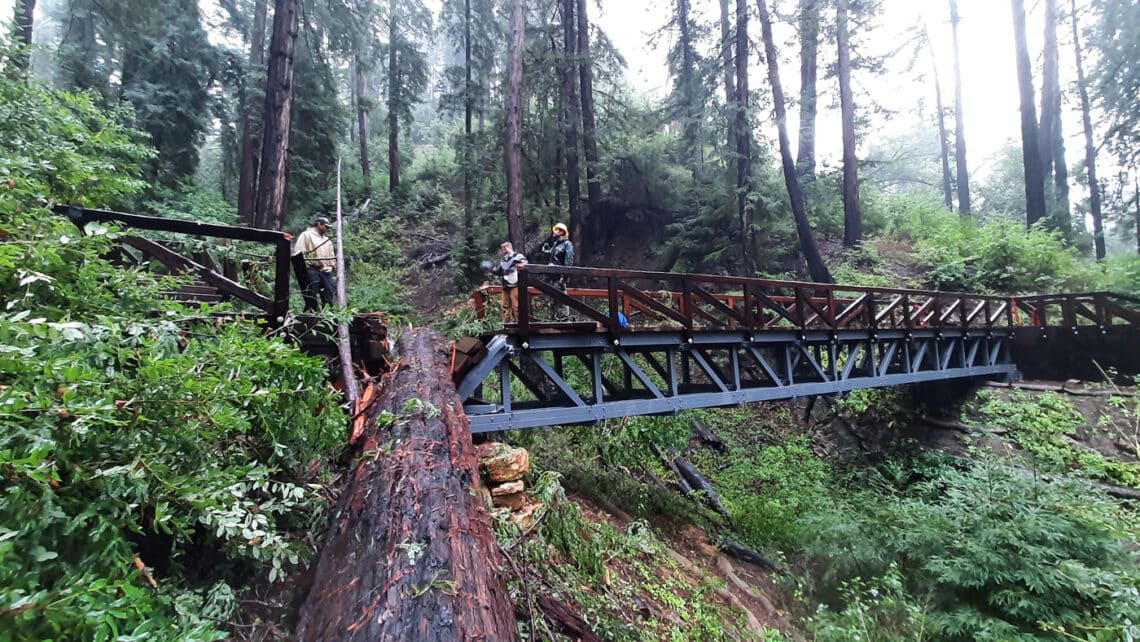
Building a plan
California’s state parks are built into the fabric of the Golden State. These treasures not only provide recreational opportunities, but they also are critical to our plans for addressing climate change, protecting biodiversity, and building resilience to wildfire. This vision for the future requires big-picture land management planning that considers the immediate needs of parks and facilities as well as a long-term vision to address climate change and sea level rise, building wildfire resilience, and realizing equitable access. California State Parks’ budget should reflect its leadership role in advancing the state’s climate plans, and California State Parks should be recognized as a vital partner in ensuring a resilient future for California.
California State Parks needs consistent and reliable funding to support land acquisition, visitation management, deferred maintenance, restoration, and land management. The unpredictable funding pattern characterized by the last few decades is unsustainable and is taking a toll on our world-class state park system.
Actions
- Through the climate bond, support an investment in state parks land acquisition and deferred maintenance.
- Provide $500 million for park improvement projects.
- Provide $200 million for natural resources management.
Our California redwood state parks depend on legislators’ support for stewardship funding now.
